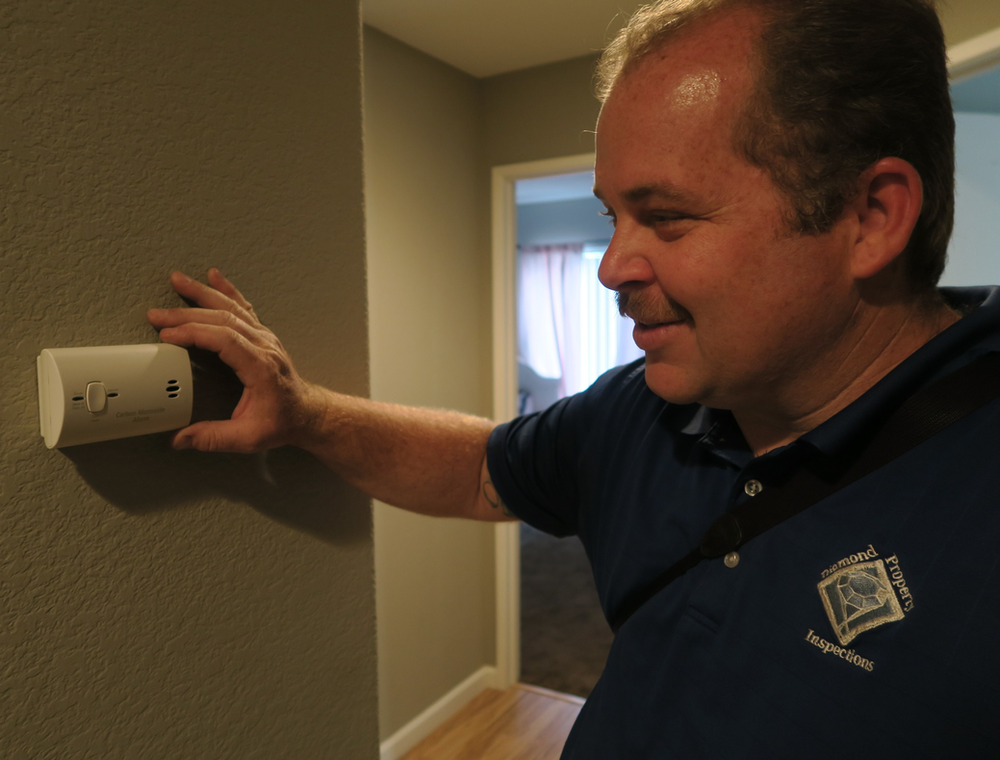Carbon Monoxide is a harmful gas that is also known as the “Silent Killer”. Knowing the areas of the home that can produce this gas is important. We help identify the areas in your home that help alarm you if there is a Carbon Monoxide leak as well as identify issues from your fuel-burning appliances that may need to be improved to prevent Carbon Monoxide poisoning.
What is Carbon Monoxide and where does it come from?
It is an odorless, colorless, gas that can kill you. Carbon Monoxide comes from fuel-burning appliances such as cars, trucks, generators, stoves, lanterns, grills, gas ranges, furnaces, fireplaces. Carbon Monoxide is also difficult to measure and identify symptoms as the symptoms can blend in with common illnesses such as stomach issues, or the flu.
How do you know if you have Carbon Monoxide poisoning?
If a Carbon Monoxide leak is not as severe, it may be leaking without you knowing. Common signs of Carbon Monoxide poisoning that have been identified by the Center For Disease Control also known as the “CDC” may be dizziness, weakness, vomiting, headache, chest pain, confusion. A common way of describing these symptoms as well may also be known as “Flu-Like” symptoms. If you breathe a lot of Carbon Monoxide this is when it can be fatal. One of the common ways of poisoning happen when you sleep or when you are intoxicated as you may not experience the symptoms and pass out.
What can I do in my home to prevent Carbon Monoxide poisoning?
Alarms
Thanks to technology there are now many ways of monitoring as well as alarming you of a Carbon Monoxide leak. Several Home Security companies now even offer Smoke & Carbon Monoxide sensors that will alarm you and send you an alert to your mobile device. Part of your Home Inspection, we identify if there are any Carbon Monoxide detectors in the home. Currently, the most reliable way is to install a battery power battery-powered alarm near fuel-burning appliances. There are guidelines that must be followed in a home to properly place the alarms such as having them near the entrance of bedrooms and at every level of a home. Your Carbon Monoxide alarm should be replaced every 5 years according to certain authorities.
Water Heater
Part of a Home Inspection is to evaluate your Water Heater, such as it’s current condition, signs of failure along with items that may need to be improved. After your inspection, it is always a good idea to have your Water Heater maintained by a licensed Plumber.
Heating System
Your heating system is also a fuel-burning appliance. Your furnace should be inspected once a year as well by a Licensed Heating & Air Conditioning professional. During their evaluation, they will inspect your gas connections, burner assembly, heat exchanger, etc.
Fireplace & Stove
Before using your Fireplace visually check for signs such as burned areas, smoke accumulation, etc. Improper airflow can be harmful. If you smell gas coming from your stove when it’s not on, it is also a good idea to check your gas connection to the stove. At times during a move, or cleaning, the appliance may have been pushed back too far and accidentally damaged or bent the connection line causing a small puncture that can leak gas.
Knowing more about Carbon Monoxide can help you and your family be more protected. As a Home Inspector, I take pride and I dedicate my time to perform a thorough evaluation of your home to help identify the condition of several areas so that you can have peace of mind. Call today to schedule your Home Inspection in Riverside County or it’s surrounding areas.
#HomeInspection #Fall #Safety




